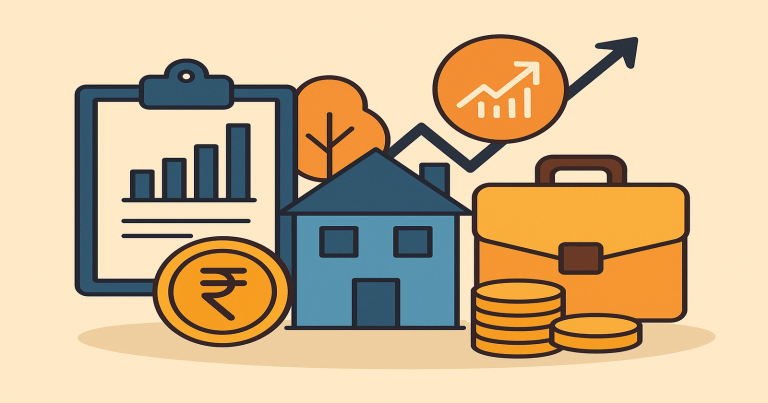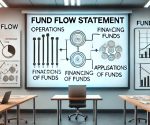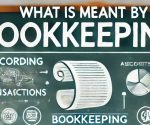Asset is an extremely important term in accounting, finance, and business management. An asset is anything of value to an entity that can either be owned or controlled by the entity, thus providing economic value either in the present or in the future. Assets are basically cash in hand; land, buildings, machinery, textiles, patents, trademarks, etc. Assets are essential to a business or financial institution to carry on business and generate income. As an accounting term, an asset is a resource arising from a past event, controlled by an entity, and expected to bring future economic benefit. An asset must also be measurable in terms of money so that it can be entered into the entity’s financial accounts. Every asset plays a role in measuring the operational performance and valuation of an organization, may it be tangible or intangible. Assets help an organization in carrying out its daily functioning, generating income, and bolstering the overall financial health. Moreover, they provide the ability of an organization to deal with risks and secure loans against them, as well as invest in future opportunities. Grasping the meaning of the asset, including its characteristics, types, and classifications, is vital knowledge for a student of business, an accountant, or a financial planner.
Meaning of Asset
An asset is a valuable resource owned or controlled by a business or individual that brings future benefits. It can be anything that increases the value or earning potential of the owner. From an accounting point of view, an asset must meet three key conditions: it must result from a past transaction, the entity must control it, and it must have measurable future benefits.
Assets may exist in physical form (like land or furniture) or in non-physical form (like brand reputation or copyrights). Whether used for operational purposes or held for investment, all assets contribute to financial stability and growth. They are recorded on the balance sheet and reviewed during audits, mergers, and financial planning.
Proper asset identification helps maintain accurate financial records. It also assists businesses in evaluating their market position, risk management ability, and resource planning.

Features of an Asset
Assets have certain key characteristics that make them unique and essential in accounting. These features help identify, evaluate, and record assets properly.
- Ownership or Control
An entity must either own or control the asset. Even if it does not legally own the item, having control over its use and benefits qualifies it as an asset. For example, a leased machine under a finance lease is treated as an asset. - Result of Past Transactions
Assets arise due to past events like purchase, donation, or internal development. Future plans do not qualify as assets until action is taken. A machine ordered is not an asset until received and recorded. - Economic Benefit
Assets must bring value, such as increasing income or reducing expenses. These benefits could be in cash flow or utility. For example, a delivery van helps generate profit by fulfilling orders on time. - Physical or Non-Physical Nature
Assets may be tangible like machinery or intangible like trademarks. Both hold value, though they differ in form. This distinction helps in valuation and accounting treatment. - Measurable in Money Terms
Only assets that can be given a monetary value are recorded in books. Estimations based on cost, market value, or future income guide the valuation process. - Record in Financial Statements
Businesses show assets in the balance sheet. The assets listed determine the overall strength, liquidity, and capital position of a company.
These features help maintain accuracy, reliability, and comparability in financial reporting.
Classification of Assets
Assets are classified based on various factors to help in correct accounting and decision-making. The main basis of classification includes convertibility, physical existence, and use in business.
1. Based on Convertibility
- Current Assets
These assets convert into cash or get consumed within one year. They include cash, inventory, accounts receivable, and short-term investments. These support day-to-day operations and working capital. - Non-Current Assets
These stay with the business for more than one year. Examples include buildings, machinery, and long-term investments. They support long-term business goals and are not for immediate sale.
2. Based on Physical Form
- Tangible Assets
These can be seen, touched, and physically counted. Examples include land, furniture, and tools. Tangible assets are depreciated over time due to wear and tear. - Intangible Assets
These do not have a physical form but have value. Examples include goodwill, copyrights, software, and patents. These help in branding, innovation, and intellectual growth.
3. Based on Use
- Operating Assets
These are used in everyday business tasks. They include equipment, delivery trucks, and office computers. Operating assets directly support production and services. - Non-Operating Assets
These are not essential to daily operations but still hold value. Examples are unused land, surplus funds, or old machinery. Businesses may sell them or hold them for appreciation.
This classification helps in managing resources efficiently, complying with accounting standards, and guiding business planning.
Types of Assets
Different types of assets serve different business needs. Understanding them helps companies allocate resources properly and track financial health.
- Fixed Assets
Fixed assets are long-term tangible assets used in production. They include real estate, machinery, and factory equipment. Businesses depreciate them over time to reflect loss in value. - Current Assets
Current assets include assets that convert into cash quickly. Cash, bills receivable, and raw materials fall under this category. They are essential for liquidity and working capital. - Fictitious Assets
Fictitious assets are not real assets but appear in the books as deferred revenue expenses. Examples are preliminary expenses, advertisement costs, and underwriting commissions. They do not bring future benefits but are carried forward temporarily. - Wasting Assets
These include natural resources that reduce with use, such as coal mines or oil wells. Companies use depletion accounting to write down their value annually. - Contingent Assets
These may arise in the future depending on a specific event. For example, a legal case may result in compensation. These assets are disclosed in the notes and recorded only after confirmation.
Proper understanding of asset types aids in better financial control, valuation, and risk assessment.
Importance of Assets in Business
Assets are vital for running a business smoothly. They provide infrastructure, support services, and serve as financial strength indicators.
Support Operations
Assets like machinery, tools, and inventory help in daily operations. Without them, production or services can’t happen.
Help Generate Income
Assets like factories and delivery vehicles help in making and selling goods. They support revenue generation directly or indirectly.
Strengthen Balance Sheet
A company with more valuable assets looks stronger in its financial statements. It attracts investors, banks, and partners easily.
Enable Borrowing
Companies can take loans by pledging their assets. Banks look at asset value before giving credit.
Show Financial Health
By checking asset quantity and quality, one can understand how well a company is doing. Strong assets mean good performance.
Aid in Expansion
Long-term assets like land and buildings support company growth and future expansion.
Therefore, assets are central to a company’s success and form the backbone of all financial activities.
Accounting Treatment of Assets
Accounting for assets means recording them correctly in the books of accounts. Businesses must follow accounting standards and principles to show true and fair value.
How Companies Treat Assets in Accounting:
- Initial Recognition
Companies record the asset when they buy or acquire it. They record the purchase cost, taxes, and other charges as the asset’s total cost. - Depreciation and Amortization
Tangible assets like machines lose value over time. This is called depreciation. Intangible assets lose value through amortization. These reduce the asset’s value gradually in the books. - Revaluation
Companies may revalue assets like land if their market value changes. This helps in showing the real worth of assets in financial reports. - Impairment
If the asset’s value falls suddenly due to damage or market drop, companies record it as an impairment loss. This ensures accuracy in reporting. - Disposal or Sale
When a company sells an asset, it removes it from the books. If there is profit or loss, it shows it in the income statement.
Accounting treatment helps in correct reporting and compliance. It also helps stakeholders know how the company manages its assets.
Asset FAQs
Q1. What is an asset in accounting?
An asset refers to a resource owned or controlled by a business that exhibits future economic benefits measurable in monetary terms.
Q2. How do assets appear in the balance sheet?
Assets occupy the left hand side of the balance sheet, classified as either current or non-current depending on the time of usability, that is, within a year.
Q3. What is the difference between tangible and intangible assets?
Tangible assets essentially exist in a physical form, buildings being examples. Intangible assets do not exist in physical form but have value, such as patents or goodwill.
Q4. Can an asset depreciate?
Yes. Over time physical wear and tear, loss of market value, or obsolescence cause assets to depreciate. The effects are recognized in the books of the company as depreciation, amortization, or impairment.
Q5. Are all expenses assets?
No. Only expenses that provide future benefits and meet recognition criteria can be treated as assets.


